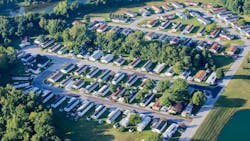Turlock Irrigation District Adopts New Platform to Manage Distributed Energy Resources
The Turlock Irrigation District (TID) is advancing its distributed energy efforts with the adoption of a new platform to manage commercial and residential demand response programs. TID has selected Open Access Technology International’s (OATI) webSmartEnergy Distributed Energy Resource Management System (DERMS) to coordinate energy use from behind-the-meter devices, including smart thermostats and commercial load systems.
The decision places TID among a growing group of public power utilities implementing more sophisticated distributed energy resource management tools as they adapt to a more dynamic and decentralized grid.
Coordinated Demand Response Across Sectors
The new DERMS platform will allow TID to monitor and manage both commercial and industrial (C&I) energy users and residential participants through a unified interface. This “single pane of glass” approach is designed to simplify operations and enhance visibility across programs.
The platform will support multiple smart thermostat providers—including Renew Home, Copeland Sensi, ecobee, and Honeywell—by coordinating enrollment, communications, and demand response events. Customers will have access to a web portal to update contact information, choose notification recipients, opt in or out of events, and track program performance.
This added functionality is expected to increase transparency and engagement between TID and its customers, which utility leaders say is key to long-term program success.
Part of a Broader Digital Strategy
TID already uses other OATI platforms for trading and reliability management, including webTrader for scheduling and webTrans for transaction management. The DERMS platform extends this partnership into distributed energy coordination.
OATI’s DERMS is hosted on its NERC/CIP-compliant cloud infrastructure and supports a broad range of applications—from smart thermostats and microgrids to battery storage and electric vehicle charging—under a modular system that utilities can expand over time.
The platform's flexibility is designed to accommodate future grid needs, including tighter integration of distributed resources and more granular control of energy usage at the local level.
